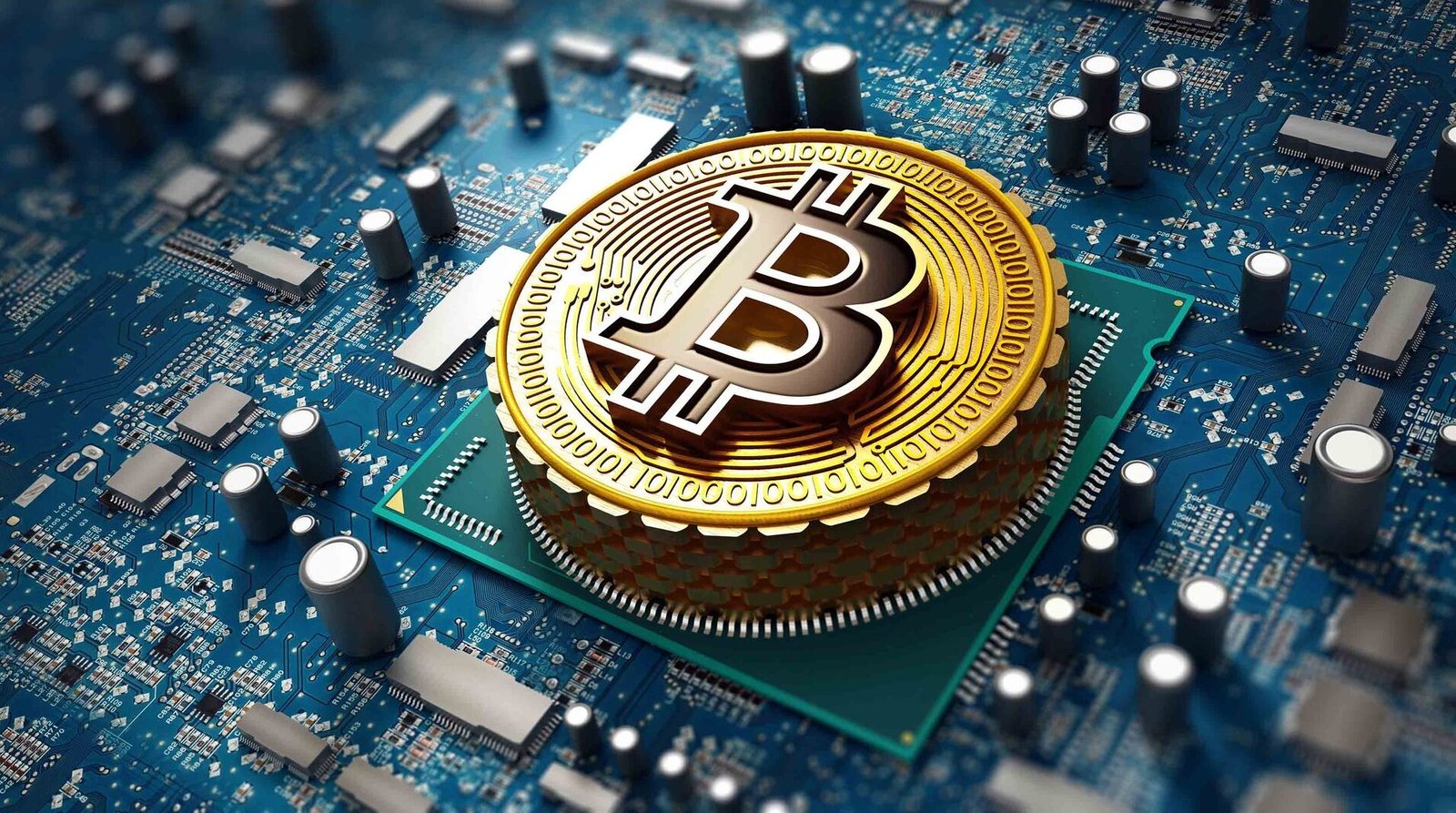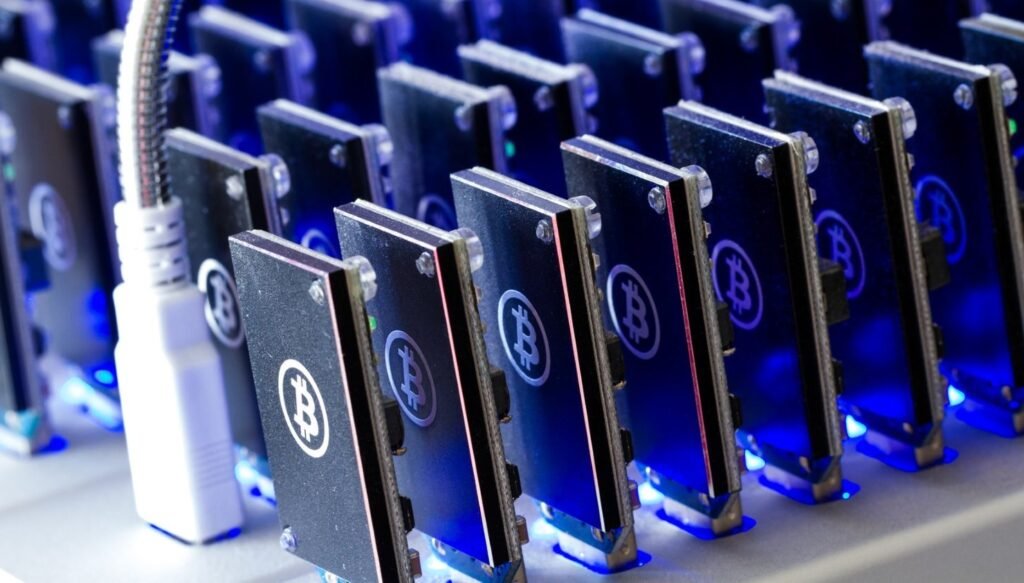The cryptocurrency landscape continues to evolve rapidly, and finding the best Bitcoin mining hardware 2025 has to offer is crucial for anyone looking to enter or expand their mining operations. As Bitcoin’s network difficulty increases and energy costs fluctuate globally, selecting the right mining equipment can make the difference between profitable operations and costly mistakes. The best Bitcoin mining hardware 2025 combines cutting-edge technology with energy efficiency, delivering optimal hash rates while maintaining reasonable power consumption. Whether you’re a beginner exploring cryptocurrency mining or an experienced operator upgrading your mining farm, understanding the latest ASIC miners and their capabilities is essential for maximizing your return on investment in today’s competitive mining environment.
What Makes the Best Bitcoin Mining Hardware in 2025?
The cryptocurrency mining industry has undergone significant transformations, with manufacturers pushing the boundaries of efficiency and performance. When evaluating the best Bitcoin mining hardware 2025 offers, several critical factors distinguish superior equipment from mediocre alternatives.
Key Performance Metrics for Modern Mining Hardware
Hash rate remains the primary indicator of mining power, measured in terahashes per second (TH/s). However, raw computational power alone doesn’t determine profitability. Energy efficiency, expressed as watts per terahash (W/TH), has become equally important as electricity costs continue to impact mining margins significantly.
Modern ASIC miners also feature improved cooling systems, reducing operational noise and extending hardware lifespan. The best mining hardware integrates advanced chip architectures that deliver higher performance while generating less heat, ultimately reducing cooling requirements and operational expenses.
Reliability and build quality have emerged as crucial considerations, especially for large-scale mining operations. Equipment downtime directly impacts profitability, making durability and manufacturer support essential factors in hardware selection.
Top Bitcoin Mining Hardware 2025: Comprehensive Reviews

Antminer S21 Pro – Leading Performance Champion
The Antminer S21 Pro represents Bitmain’s latest technological achievement, delivering exceptional hash rates of up to 234 TH/s while maintaining energy efficiency at approximately 15 J/TH. This powerhouse mining unit utilizes advanced 4nm chip technology, significantly improving performance over previous generations.
Its enhanced cooling system operates quietly while effectively managing heat dissipation, making it suitable for both home and industrial mining setups. The S21 Pro’s robust construction and proven reliability make it an excellent choice for serious miners prioritizing maximum hash rate output.
The unit’s power consumption of approximately 3,510W requires adequate electrical infrastructure, but its superior efficiency translates to better profitability margins compared to older mining hardware. With proper cooling and ventilation, the S21 Pro can operate continuously in demanding mining environments.
Whatsminer M60S – Efficiency Focused Solution
MicroBT’s Whatsminer M60S stands out for its impressive energy efficiency, achieving approximately 172 TH/s at just 14.5 J/TH. This exceptional efficiency makes it particularly attractive for miners operating in regions with higher electricity costs.
The M60S features advanced power management systems that optimize energy consumption across varying operating conditions. Its innovative cooling design ensures stable performance while minimizing noise levels, addressing common concerns for residential mining operations.
Built with high-quality components and rigorous testing standards, the M60S offers excellent reliability for long-term mining operations. Its balanced approach to hash rate and energy efficiency makes it suitable for various mining strategies and budget considerations.
AvalonMiner 1466 – Value-Oriented Performance
Canaan’s AvalonMiner 1466 provides solid mining performance at competitive pricing, delivering 150 TH/s with reasonable energy efficiency of approximately 16.5 J/TH. While not leading in raw specifications, it offers excellent value for budget-conscious miners.
The 1466’s straightforward design prioritizes reliability and ease of maintenance, making it accessible for miners with limited technical experience. Its moderate power consumption of 2,475W makes it compatible with standard electrical setups in many residential and commercial locations.
This miner’s balanced specifications and competitive pricing position it as an attractive entry point for new miners or those expanding existing operations without requiring massive infrastructure investments.
Bitcoin Mining Profitability Analysis 2025
Current Market Conditions and Mining Economics
Bitcoin mining profitability in 2025 depends on several interconnected factors including Bitcoin’s market price, network difficulty, electricity costs, and hardware efficiency. The best Bitcoin mining hardware 2025 provides must deliver positive returns under current market conditions while maintaining resilience against future changes.
Network difficulty has continued its upward trajectory, requiring more computational power to solve blocks and earn rewards. This increase emphasizes the importance of selecting high-efficiency mining hardware capable of maintaining profitability as competition intensifies.
Electricity costs vary significantly by region, making energy-efficient miners increasingly valuable. Areas with renewable energy sources or subsidized electricity rates offer significant advantages for mining operations using the latest hardware.
ROI Calculations for Top Mining Hardware
Return on investment calculations must consider hardware costs, electricity expenses, maintenance requirements, and potential Bitcoin price fluctuations. The best mining hardware typically achieves positive ROI within 12-18 months under favorable conditions.
Premium miners like the Antminer S21 Pro command higher initial investment but offer superior long-term profitability through increased hash rates and improved efficiency. Budget-friendly options may extend payback periods but provide lower entry barriers for new miners.
Successful mining operations often diversify their hardware portfolio, balancing high-performance units with cost-effective alternatives to optimize overall profitability and risk management.
Essential Setup Requirements for Modern Mining Hardware
Electrical Infrastructure and Power Management
Operating the best Bitcoin mining hardware 2025 requires adequate electrical infrastructure capable of handling significant power loads safely and efficiently. Most modern ASIC miners require 240V connections and dedicated circuits to prevent electrical issues and optimize performance.
Professional electrical installation ensures compliance with local codes and safety standards while maximizing equipment lifespan. Proper grounding, surge protection, and load balancing are critical components of reliable mining operations.
Power distribution units (PDUs) with remote monitoring capabilities allow operators to track power consumption, identify potential issues, and manage multiple mining units efficiently. Backup power systems can provide additional security against outages and equipment damage.
Cooling and Ventilation Systems
Effective cooling systems are essential for maintaining optimal performance and preventing hardware damage from excessive heat. Modern mining hardware generates substantial heat requiring adequate ventilation and temperature control systems.
Industrial-grade exhaust fans, intake filters, and airflow management systems create optimal operating environments for mining equipment. Proper cooling extends hardware lifespan while maintaining consistent hash rates and energy efficiency.
Climate-controlled environments provide the most stable operating conditions but require additional investment in HVAC systems. Many successful mining operations implement hybrid cooling approaches combining natural ventilation with mechanical cooling systems.
Network Infrastructure and Monitoring
Reliable internet connectivity is crucial for mining operations, requiring stable connections with adequate bandwidth for real-time communication with mining pools and blockchain networks. Redundant internet connections provide backup connectivity preventing costly downtime.
Mining management software enables remote monitoring and control of mining hardware, allowing operators to track performance, adjust settings, and identify issues quickly. Advanced monitoring systems provide detailed analytics on hash rates, temperatures, and power consumption.
Network security measures protect mining operations from cyber threats and unauthorized access. Secure configurations, regular updates, and proper firewall settings help maintain operational security and prevent potential losses.
Mining Pool Selection and Optimization Strategies
Choosing the Right Mining Pool
Mining pool selection significantly impacts profitability and operational efficiency when using the best Bitcoin mining hardware 2025. Different pools offer varying fee structures, payout methods, and geographical server locations affecting overall returns.
Established pools with consistent uptime and transparent operations provide reliable earnings and technical support. Pool fees typically range from 1-3%, making fee structure comparison important for maximizing profitability.
Geographic proximity to pool servers reduces latency and improves mining efficiency. Many successful miners test multiple pools to identify optimal configurations for their specific hardware and location.
Advanced Mining Strategies
Sophisticated mining strategies can enhance profitability beyond basic pool participation. Profit-switching algorithms automatically direct hash power to the most profitable coins, maximizing returns during market fluctuations.
Some miners employ hedging strategies using Bitcoin futures or options to lock in profits and reduce price volatility risks. These financial instruments provide additional risk management tools for large-scale mining operations.
Regular performance optimization through firmware updates, overclock settings, and environmental adjustments can incrementally improve mining efficiency and profitability over time.
Maintenance and Longevity Best Practices
Preventive Maintenance Protocols
Regular maintenance schedules ensure optimal performance and extend the operational lifespan of mining hardware. The best Bitcoin mining hardware 2025 requires consistent care to maintain efficiency and prevent costly failures.
Cleaning schedules remove dust and debris that can impede cooling and reduce performance. Regular inspection of fans, heat sinks, and electrical connections identifies potential issues before they cause equipment failure.
Firmware updates from manufacturers often include performance improvements, bug fixes, and security enhancements. Staying current with official updates helps maintain optimal mining performance and hardware protection.
Troubleshooting Common Issues
Understanding common mining hardware issues enables quick resolution and minimizes downtime. Temperature fluctuations, hash rate drops, and connectivity problems are typical challenges requiring systematic troubleshooting approaches.
Diagnostic tools and monitoring software help identify root causes of performance issues. Many problems stem from environmental factors, network connectivity, or configuration errors rather than hardware failures.
Maintaining spare parts inventory including fans, power supplies, and cables enables rapid repairs and reduces operational downtime. Professional repair services provide additional support for complex hardware issues.
Future Trends in Bitcoin Mining Technology

Emerging Technologies and Innovations
The mining hardware industry continues advancing with new chip architectures, cooling technologies, and efficiency improvements. Next-generation miners promise even better performance and energy efficiency ratios.
Liquid cooling systems are becoming more prevalent in high-density mining operations, offering superior heat dissipation compared to traditional air cooling. These systems enable higher hash rates while reducing noise and space requirements.
Integration of renewable energy sources and advanced power management systems represents growing trends in sustainable mining operations. Solar, wind, and hydroelectric power sources provide cost-effective electricity while reducing environmental impact.
Regulatory and Market Developments
Evolving regulations worldwide impact mining hardware selection and operational strategies. Energy efficiency requirements and environmental standards influence hardware development and deployment decisions.
Carbon neutral mining initiatives drive demand for energy-efficient hardware and renewable power sources. Many mining operations now prioritize environmental sustainability alongside profitability considerations.
Global supply chain developments affect hardware availability and pricing. Understanding market dynamics helps miners make informed purchasing decisions and timing strategies.
Investment Strategies and Risk Management
Capital Allocation and Portfolio Diversification
Successful mining operations employ diversified hardware portfolios balancing performance, efficiency, and risk factors. The best Bitcoin mining hardware 2025 combines proven reliability with cutting-edge performance capabilities.
Phased hardware deployment strategies spread investment risks while allowing operations to scale gradually. This approach enables miners to adapt to market changes and technological developments over time.
Equipment financing options including leasing and loan programs provide alternative funding sources for hardware acquisition. These financial tools can improve cash flow management and reduce upfront capital requirements.
Market Risk Assessment
Bitcoin price volatility significantly impacts mining profitability, requiring careful risk assessment and management strategies. Historical price analysis and market forecasting help inform hardware investment decisions.
Competition from institutional mining operations continues increasing network difficulty and reducing individual miner profits. Staying competitive requires access to the most efficient and powerful mining hardware available.
Technology obsolescence represents ongoing risks as newer, more efficient miners enter the market regularly. Planning for hardware upgrades and replacements helps maintain competitive advantages.
Conclusion
Selecting the best Bitcoin mining hardware 2025 requires careful consideration of performance, efficiency, costs, and long-term market trends. The mining landscape continues evolving with technological advances, regulatory changes, and market dynamics affecting profitability calculations.
Success in Bitcoin mining depends on more than just hardware selection. Proper infrastructure, maintenance protocols, and operational strategies contribute significantly to overall profitability and sustainability. The most successful mining operations combine cutting-edge hardware with professional management and strategic planning.
SEE MORE:Best Bitcoin Mining Hardware 2025 Top ASIC Miners for Maximum Profit

















